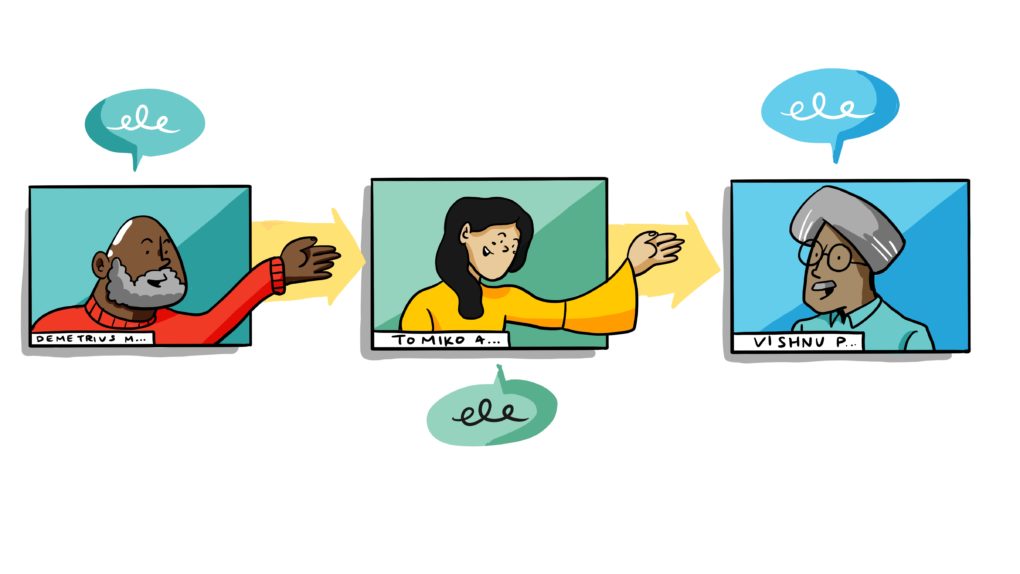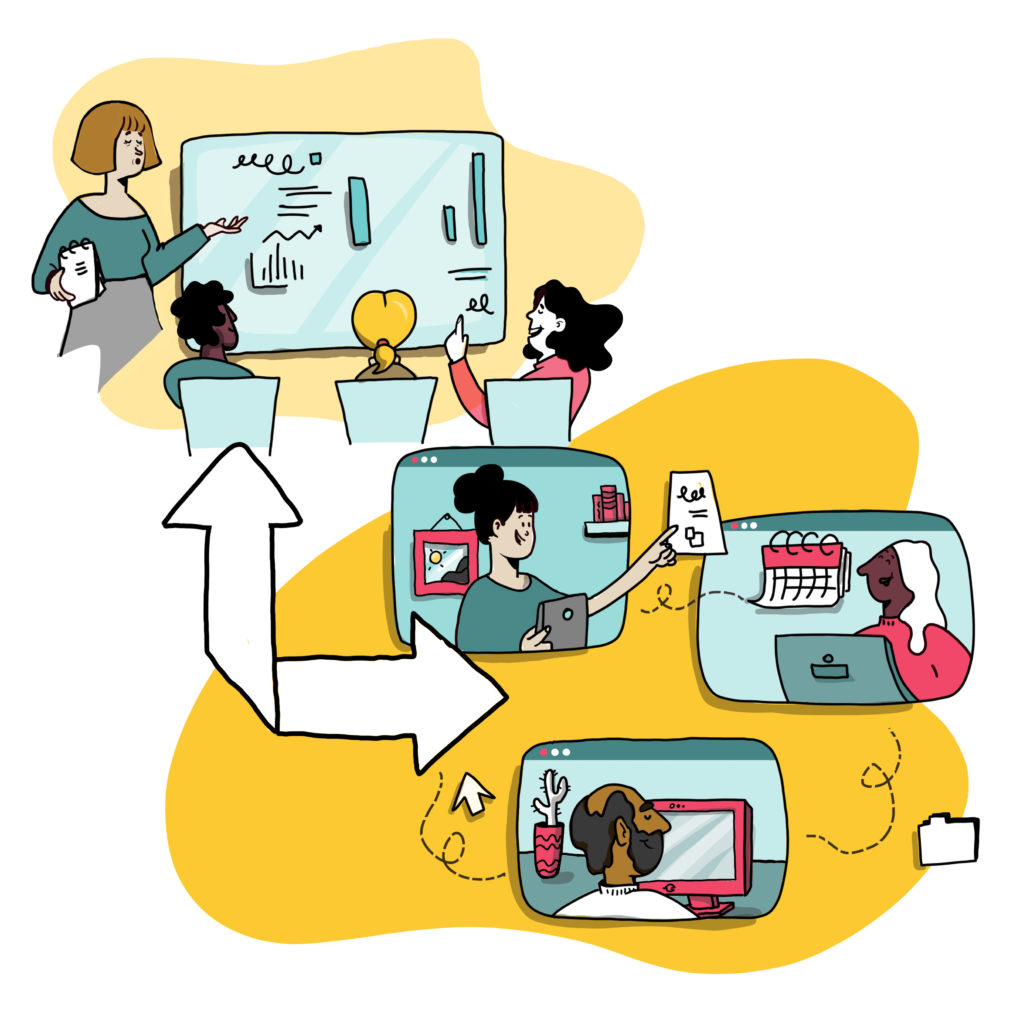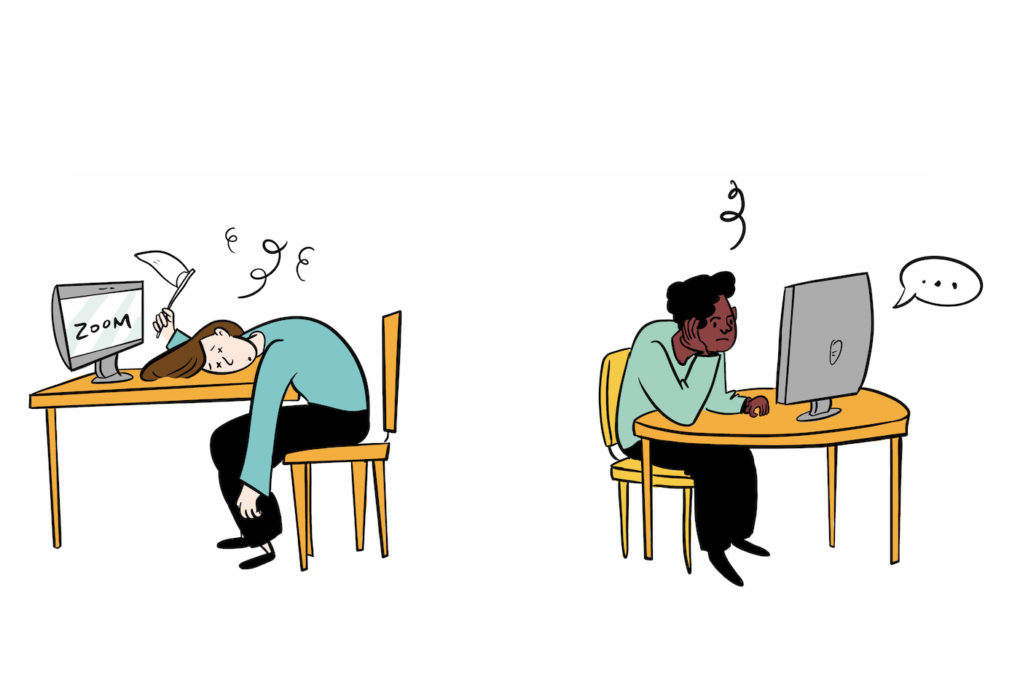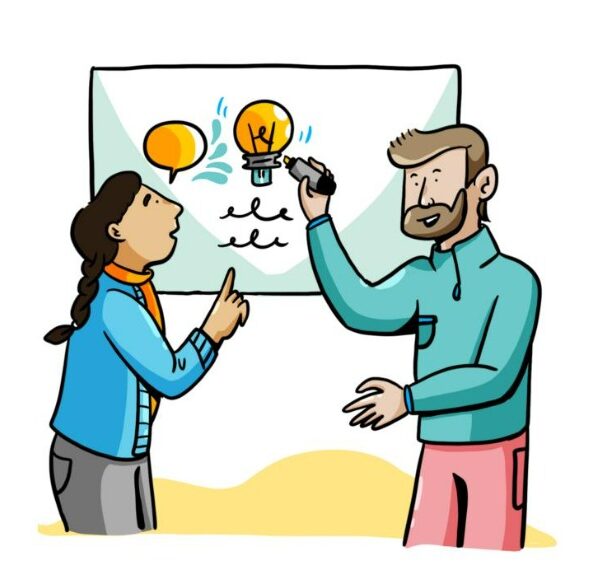While the vaccine rollout has been swift in Q2 of 2021, and the COVID-19 pandemic is beginning to slowly move into the rear view mirror, professionals are looking toward reintegrating. There’s talk of returns to offices, fully remote, asynchronous work, and of course hybrid events and environments.
What is a hybrid event?
A hybrid event is any event, like a conference, trade show, convention, festival, symposium, summit, or other convening, that caters to both in-person and virtual attendees. In-person attendees attend the event live, and enjoy the tactile, social, and experiential elements of being on site, while remote attendees usually join via livestream video and participate through audio or text chat. Historically, hybrid events have have offered significantly diminished experiences for virtual participants, but following the COVID-19 pandemic, many virtual event producers dramatically improved the experience. Event producers now plan most events to include a virtual or hybrid component, in order to reach the widest audience, and to prioritize public health and safety.

Hybrid Event Planners Are About to Cash In Big in 2021 – Don’t Miss Out
2019 was the biggest year for the events industry ever, generating $100 billion in direct spending. In 2020, that number shrank 80% to $20 billion, with 75% of events producers moving to virtual. With a year of learning under their belt, a rapidly increasing rollout of vaccines, and an industry hungry to make up for lost time, 2021 presents a heretofore unseen opportunity for hybrid events producers.
So what do event attendees, after a year of working from their dining tables, expect from conferences, trade shows, and conventions in 2021?
1. Safety
First and foremost, attendees, whether they are in-person or remoting in, need to feel safe. COVID-19 has rightfully shaken peoples’ comfort in gathering with strangers in large public spaces, and the CDC still recommends no large group gatherings. What’s more, many states have strict guidelines about sanitization, distancing, mask-wearing, and capacity for public venues.
While every person may be ultimately responsible for his or her own health and well-being, the planners who do their best to mitigate risk and enforce safe policies will be the ones that fare the best with drawing an audience. Have a plan in place for all common spaces, map out directional walking lanes, and aggressively encourage open and honest reporting and contact tracing during and after your event.
Our best advice? Don’t try to recreate your pre-pandemic event with added precautions. It’s time to reinvent the wheel, because the wheel broke. Go back to the drawing board and imagine a new way of producing an in-person event that will delight attendees, earn you and your partners revenue, and ensure that everyone can feel safe doing so. Include visual and interactive elements that work across platforms, for live and remote attendees alike.
2. Value
It’s true that every year a few folks attend conferences or trade shows because their boss asked them to, or because they need to log a certain number of seminar hours to maintain their accreditation. However, by and large, people sign up and attend conferences hoping to network and learn more about their industry, which means, just like in the before times, your event had better deliver the goods.
Beyond booking good speakers and experts, the production and facilitation of the sessions themselves can help extract value for attendees to maximize impact. We recommend leveraging pre-fabricated digital graphic recording, illustrated video, or hand-illustrated visual summaries to accompany keynote speakers. These assets can be scaled for large projection screens, or simul-cast to tablets and phones for a second screen experience. They also provide conversation points and have been shown to improve listener engagement.

We’ve also talked about the other important stakeholder value to consider: that of your sponsors. In the past, event sponsorship meant splashing your logo on the stage, underwriting the event wi-fi or coffee, or throwing the after party. Those elements are still important and valuable, however sponsors are going to get way less bang for their buck from sponsoring physical, on-location elements. Check out all the ways that ImageThink has helped clients maximize virtual sponsor ROI in the virtual event space.
3. Connection
Of course, when we talk about value, we’re not just talking about what you learn, what licenses you earn, or what swag attendees take home. There’s the undeniable value of networking. Business runs on connections, and who attendees are able to connect with at these events matters. Perhaps the toughest nut to crack in the last year of virtual events has been fostering these introductions.
Over the course of the past year, ImageThink has facilitated countless workshops and teambuilding exercises for companies of all sizes, leading icebreakers, games, and creativity exercises that encourage communication, introductions, and socialization without the drudgery of another office managed virtual happy hour.

By using existing social platforms, that don’t rely on video, like slack, what’s app, or clubhouse, attendees can get a break from the long hours of video calls while getting to know some new people. Or by leveraging an event specific app, hosts and speakers can suggest prompts and discussion topics for attendees to chime in on, whether they’re walking the convention floor, or taking it in from the comfort of the couch.
4. Equality
2020 was a year that has literally separated us into groups: those who either doubt the severity of the risks associated with COVID-19 transmission, or who understand the science and accept a certain level of risk in their behaviors; and those who opted instead to follow the strictest of guidelines remaining in self-isolation and social distancing.
As the return to public events becomes possible, it is important that both in-person and online attendees are treated with the same respect, celebrated for making safe decisions, and receive similar experiences and hospitality.

A few ways to achieve this is to make sure that events are designed from the ground up to be virtual-first. Leveraging the best platforms, testing extensively for lag and system bugs, and investing in some quality user experience testing can all help.
5. Flexibility
Plans change. Even before there was a COVID-19, attendees had to cancel, itineraries were altered, speakers had last-minute conflicts. Now, more than ever, in the wake of the massive disruption to our working lives, it’s important to offer people flexibility. We’re all human.
When in-person attendees need to change to online attendees, when online attendees can’t make all the dates, or when speakers need to pre-record their addresses, roll with it and leverage the opportunity. We have a few ideas below.

Offering daily or partial day-rates for online attendees is a great way to ensure more people with busy homelives can still attend your event. Designing each day with multiple breaks away from the video screen, or leveraging audio platforms like clubhouse, or an event-specific app chat function can create varied ways of connecting and communicating for participants.
6. Accessibility
The move to virtual environments has allowed for much wider access than ever before. Individuals with mobility issues, or who cannot travel, or with autoimmune deficiencies can now feel safe participating in online events from which they otherwise may have been excluded.
However, simply broadcasting your TED Talk or opening a chat room doesn’t give everyone the same chance to participate. Just like we need to consider making physical environments accessible for people with disabilities, we need to consider online accessibility. Make sure that images have clear, descriptive alt tags, articles include text-to-speech or pre-recorded audio options, and that any video – live or otherwise – offers closed captioning.
The forced move to remote has ushered in a huge era of opportunity. Events producers can now reach a wider than ever global audience. By thinking ahead and acting in the spirit of inclusivity, that audience can be even wider and more diverse.
Design Hybrid Events for Everyone
With many regular conference attendees unable to travel, or unlikely to attend events in 2021, and with strict capacity restrictions in place for physical venues, it is critical that event designers and planners consider the massive untapped audience online.
Reconceptualizing hybrid events from the ground up to cater to virtual audiences, and to ensure that they, as well as the in-person attendees, have value-packed experiences offers event planners a rare opportunity to broaden their audience, increase revenue, and reshape the future of conferences and trade shows. When planning your event, plan for everyone. Consider an approach that allows you to reach the wide new audience available to you by designing for virtual first, and thinking visually.
Need help with the strategic planning, design, or production of your event? Contact the ImageThink team today; we’ve got you covered.



